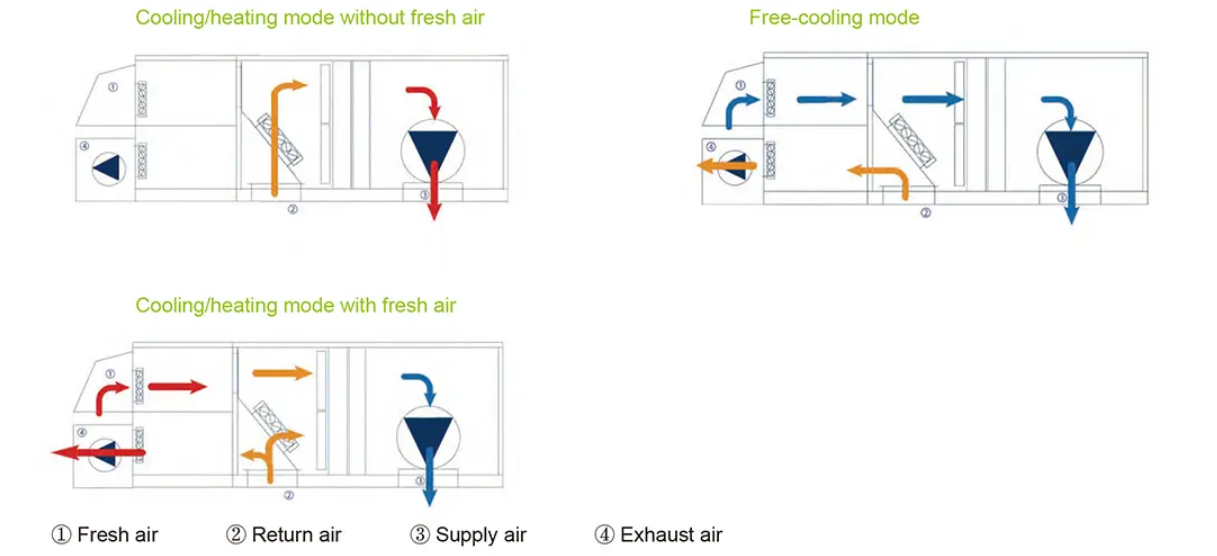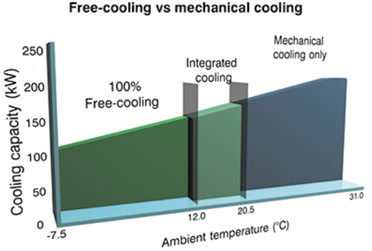The free-cooling systems are based on a simple idea: exchange indoor air with outdoor air, which allows you for conditioning a zone for free. Free cooling cannot be used alone as it depends a lot on climate conditions, so it is usually applied together with a mechanical ventilation system or air-conditioning system
In air-to-air heat exchangers, there are three modes of function: heating, cooling, and free cooling.
In the heating and cooling mode the system uses the outside air temperature conditions for the indoor spaces, the system reduces the heating and cooling demand by using a heat exchanger to pre-heat or pre-cool the new inlet air from the outside. The heating and cooling are usually done with a compressor system (like a heat pump). The air system can also promote air quality with filters (e.g. corrugated cardboard filter which has an effective sound attenuation) and improve also the humidity levels with humidifiers and dehumidifiers.
Free cooling is an energy-efficient solution characterized by an efficient control system that allows you to pump air from the outside to the inside when conditions are good. This way the compressor of the heat exchanger is not used. This mode is very useful when the outdoor air temperature is lower than the temperature from the inside (For example during summer nights), which allows you to cool down your building for free. In humidity areas instead of temperature control, an enthalpic control is needed to do free-cooling without adding too much humidity to your zone. Thus, it can only be used, whenever the climatic conditions are favorable.

Figure: Free cooling mode of an HVAC system from https://www.waterchiller.pl/free-cooling-rooftop-packaged/57012818.html
Free cooling can be applied to residential houses, hotels, town halls, and even data centers. In some countries the use of recuperators or free-cooling systems is mandatory, to increase the efficiency of the building.
The benefits are the “free” source of energy, easy maintenance (just cleaning up the filters), and the system can take effect when the difference between the outside supply and return temperatures is as little as 1°C.
With the implementation of Free Cooling systems operation costs are reduced, but just in some cases when the climatic conditions are favorable. Although costs are reduced there is still associated cost due to fans (which need to ensure the pressure in the ducts and heat exchangers to allow the fluid/air to move), but it is low compared to a system without free cooling that always operates with mechanical ventilation.

Comments ()